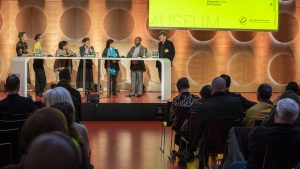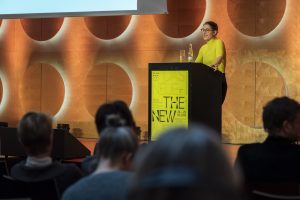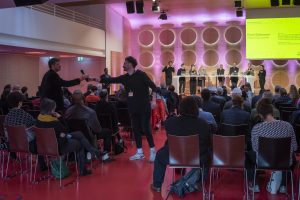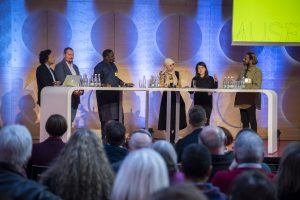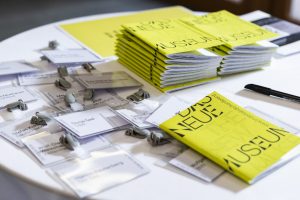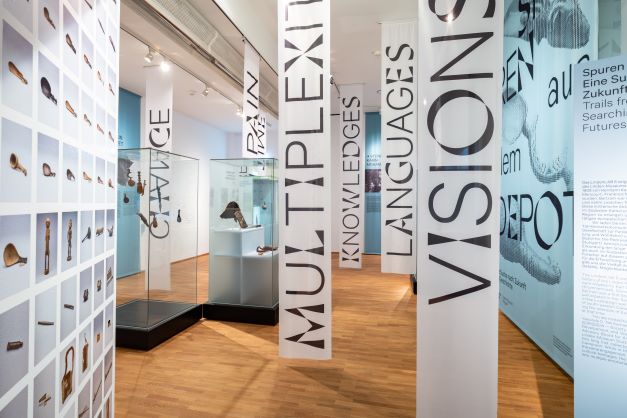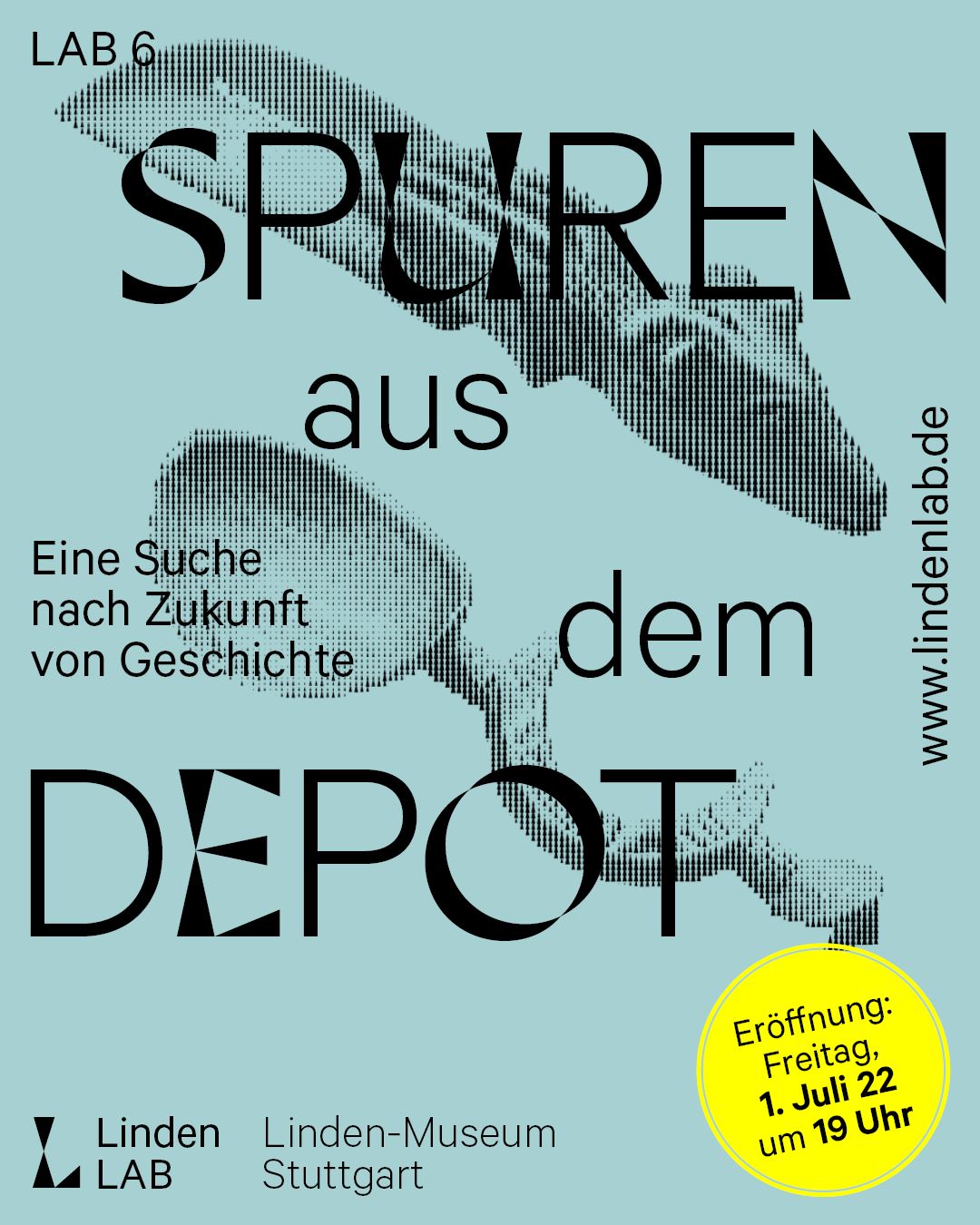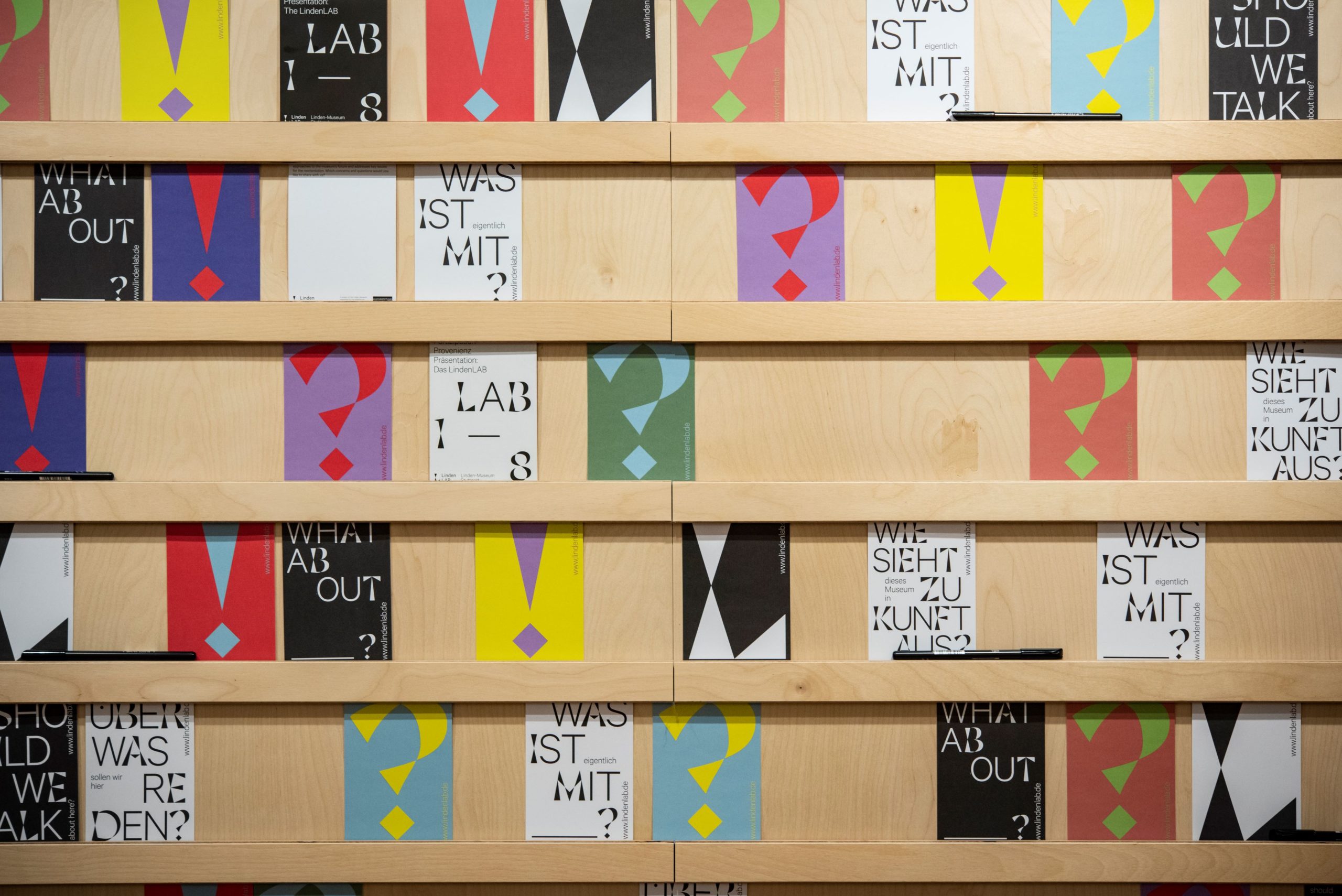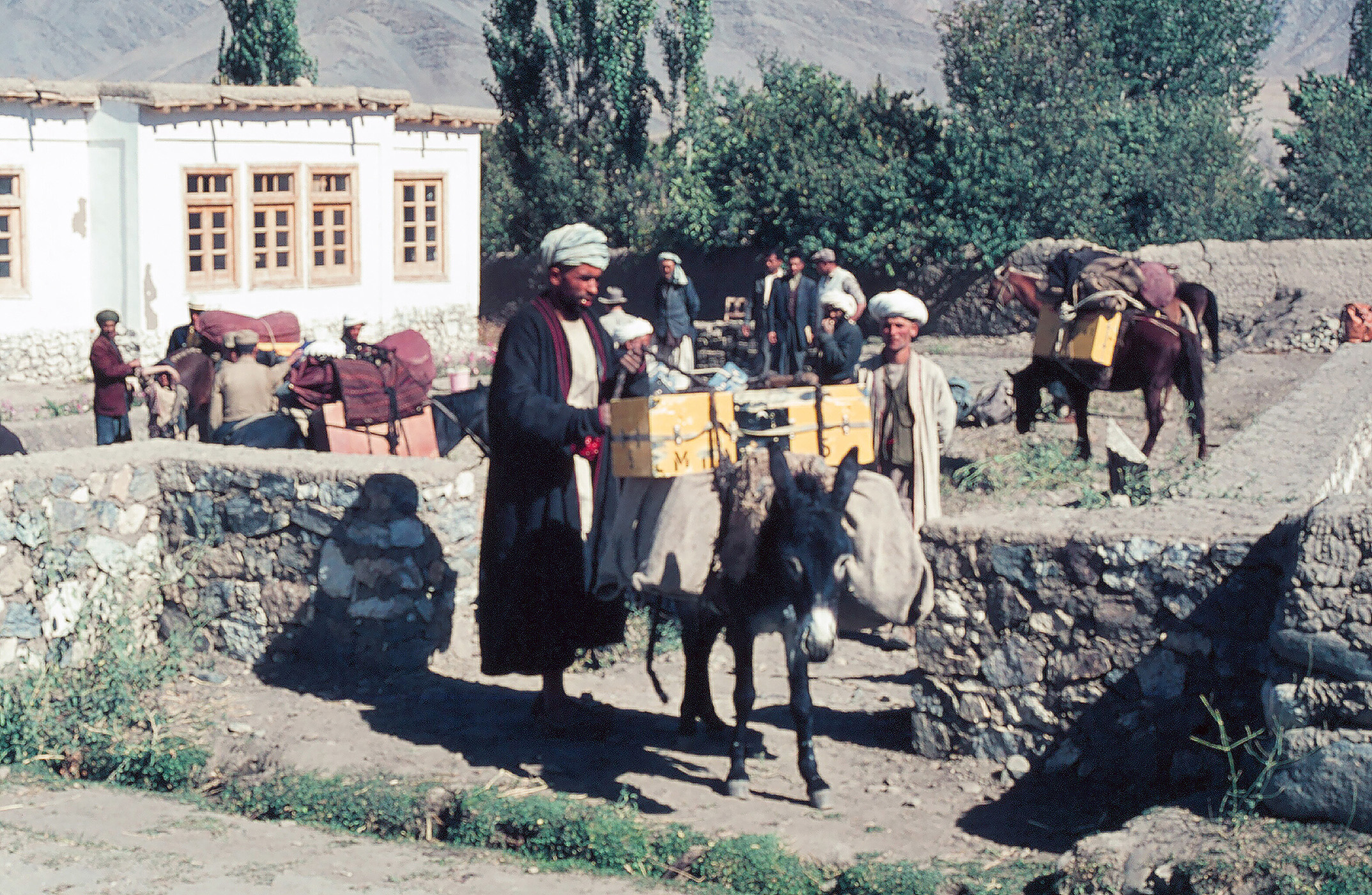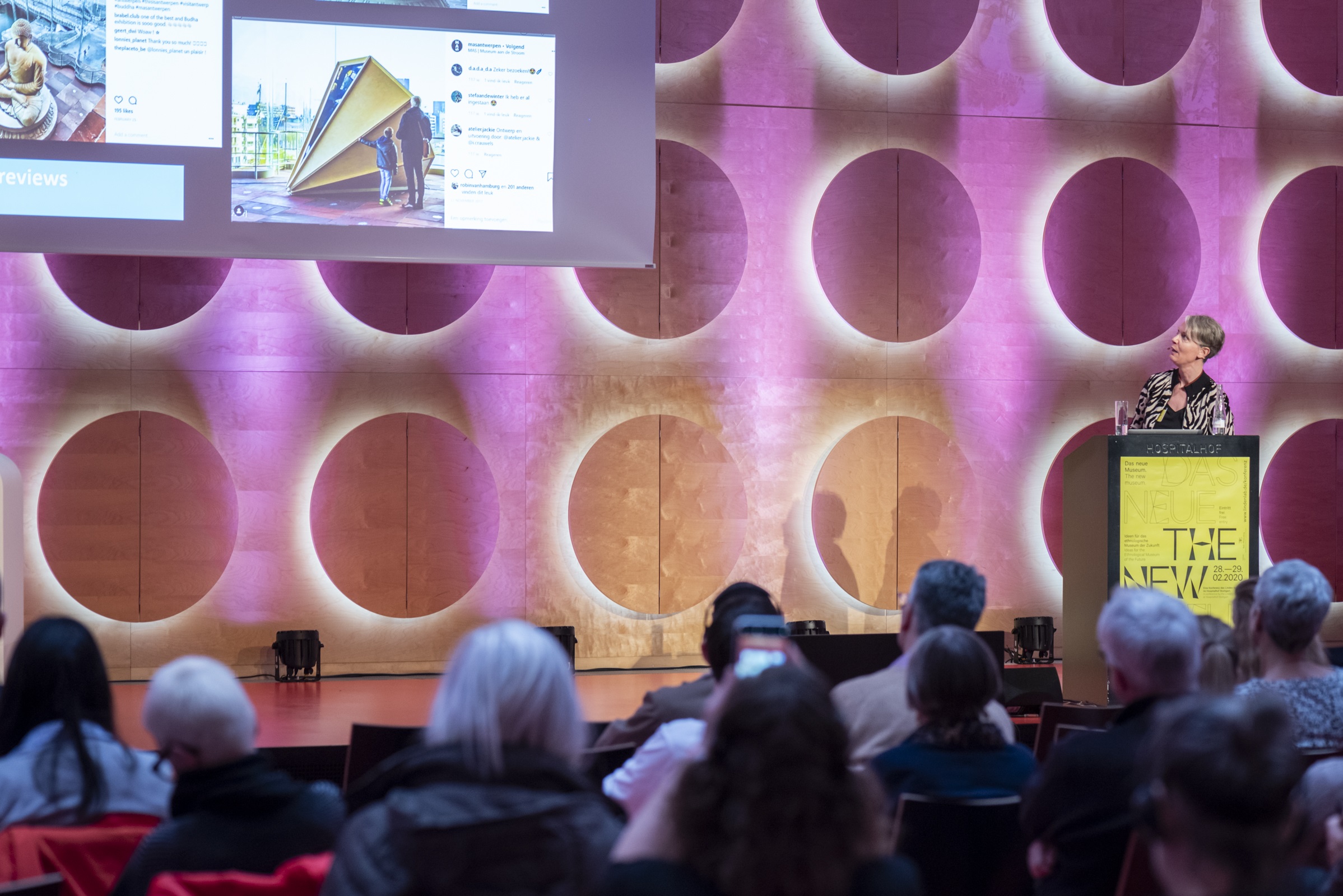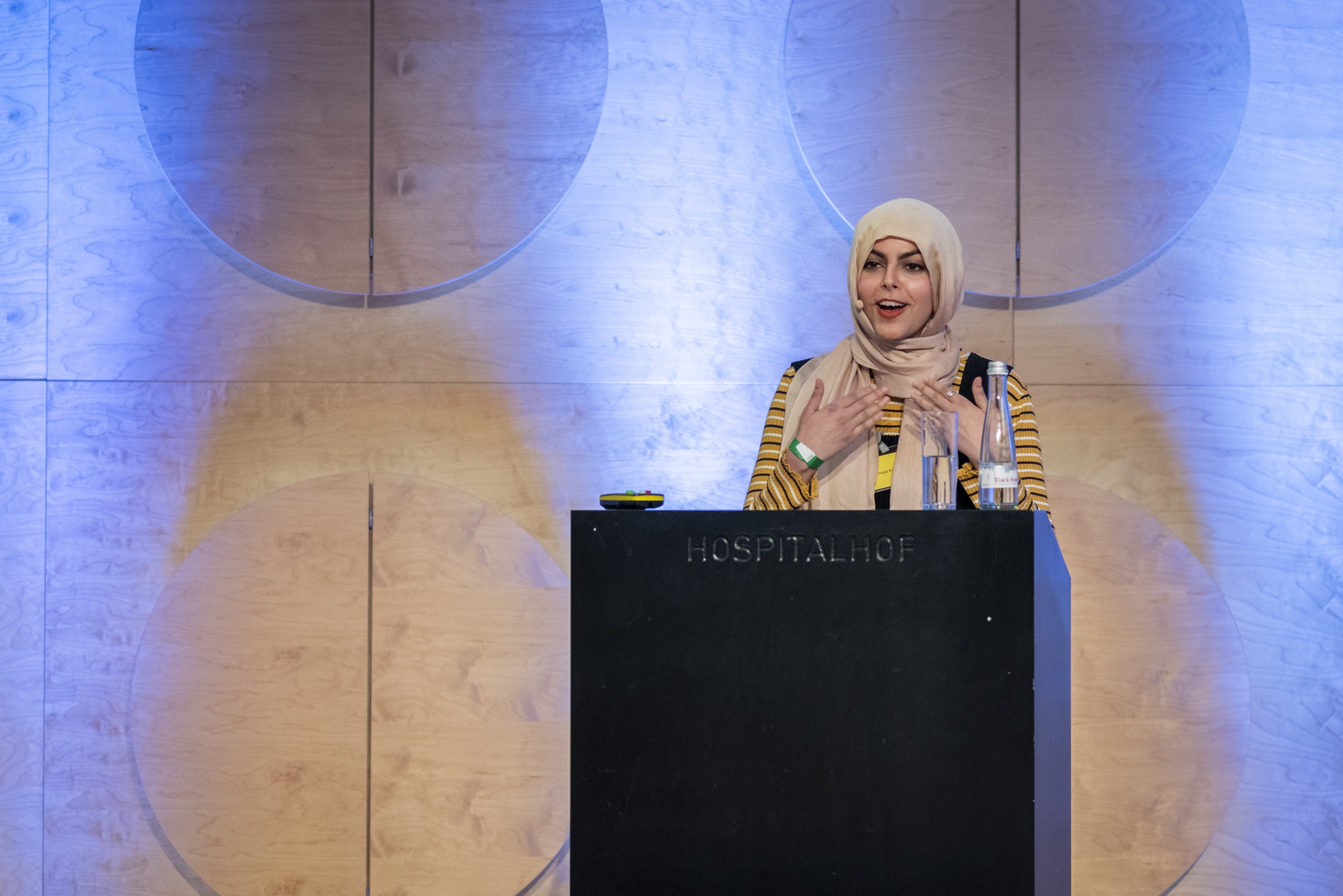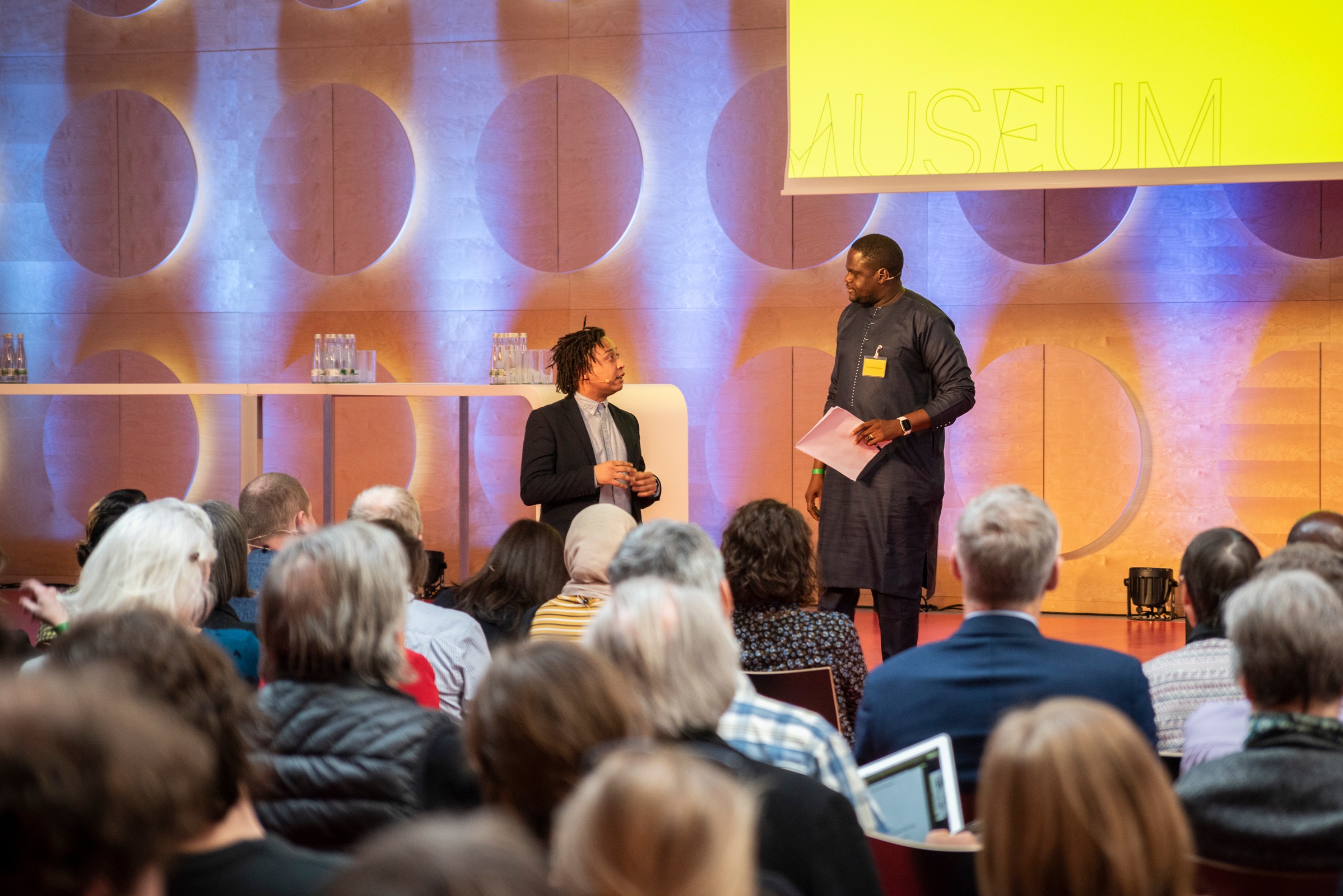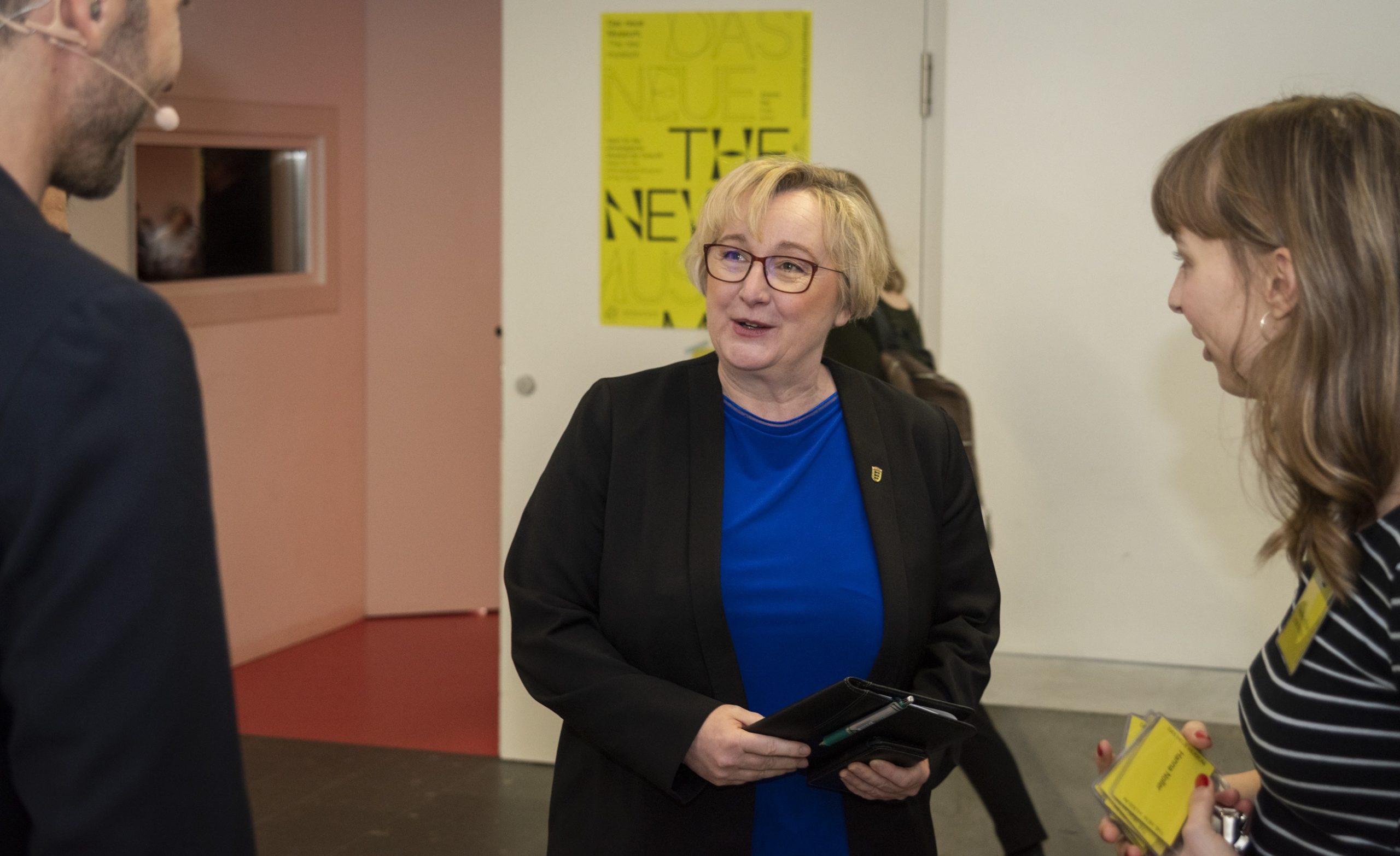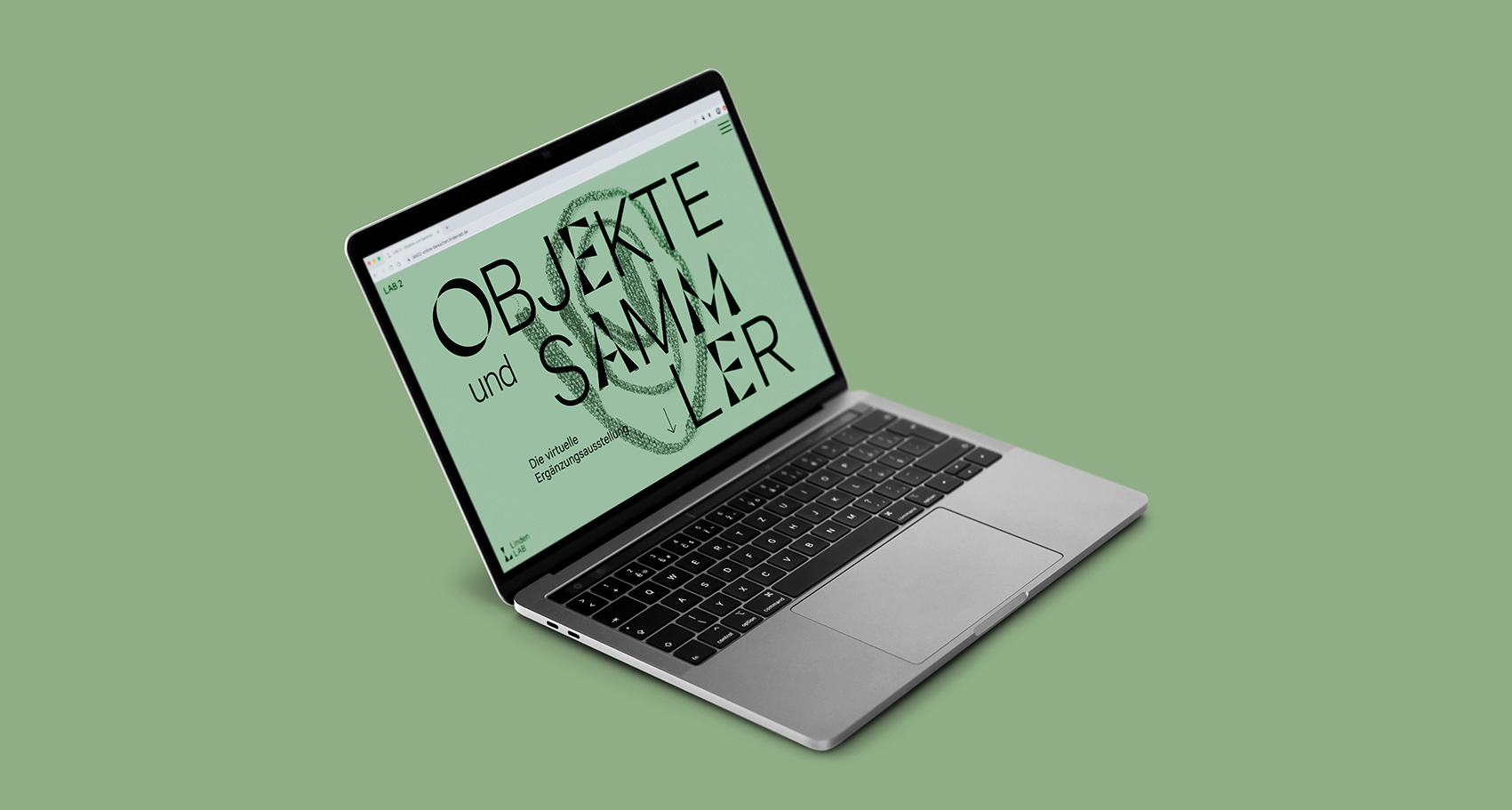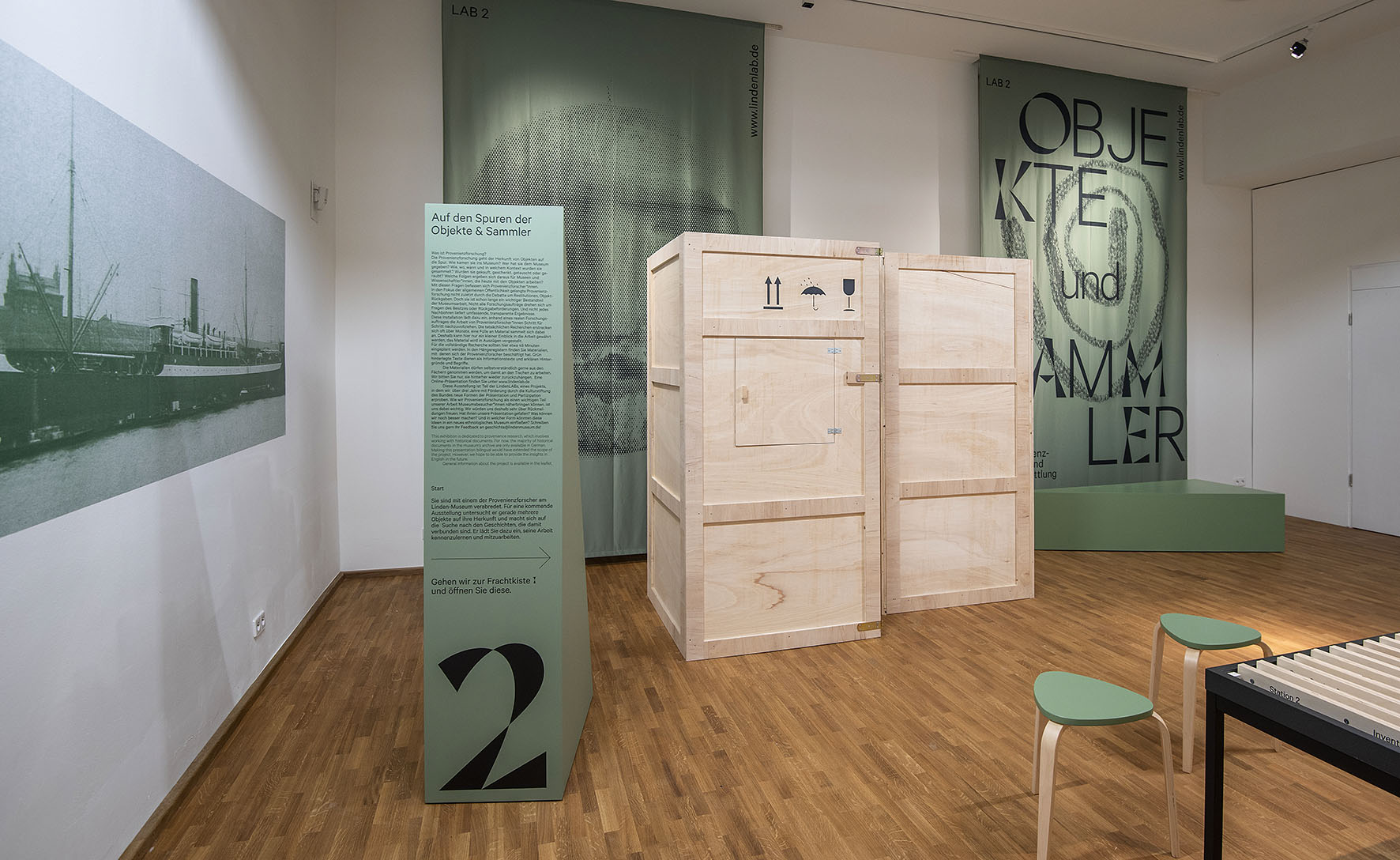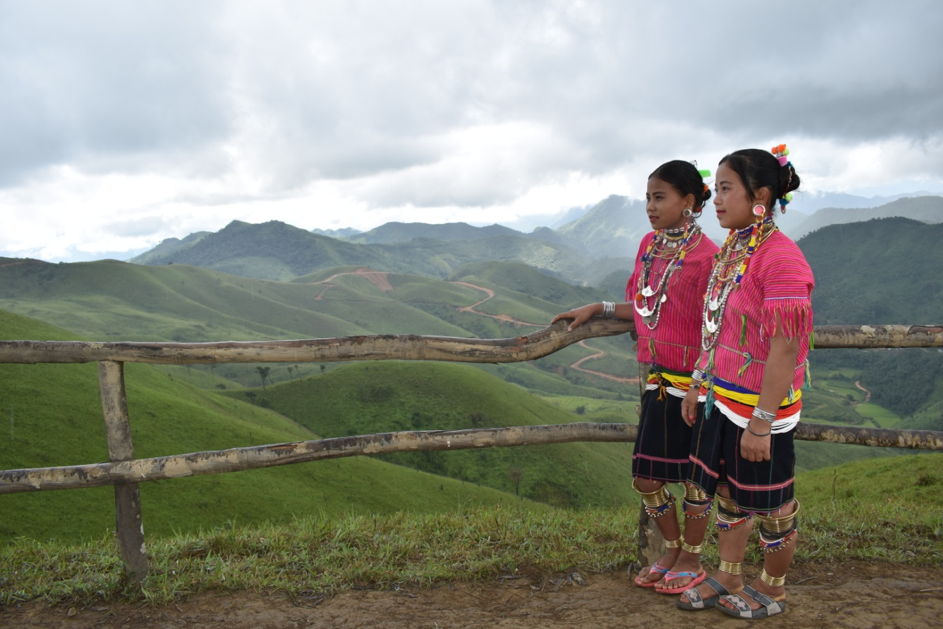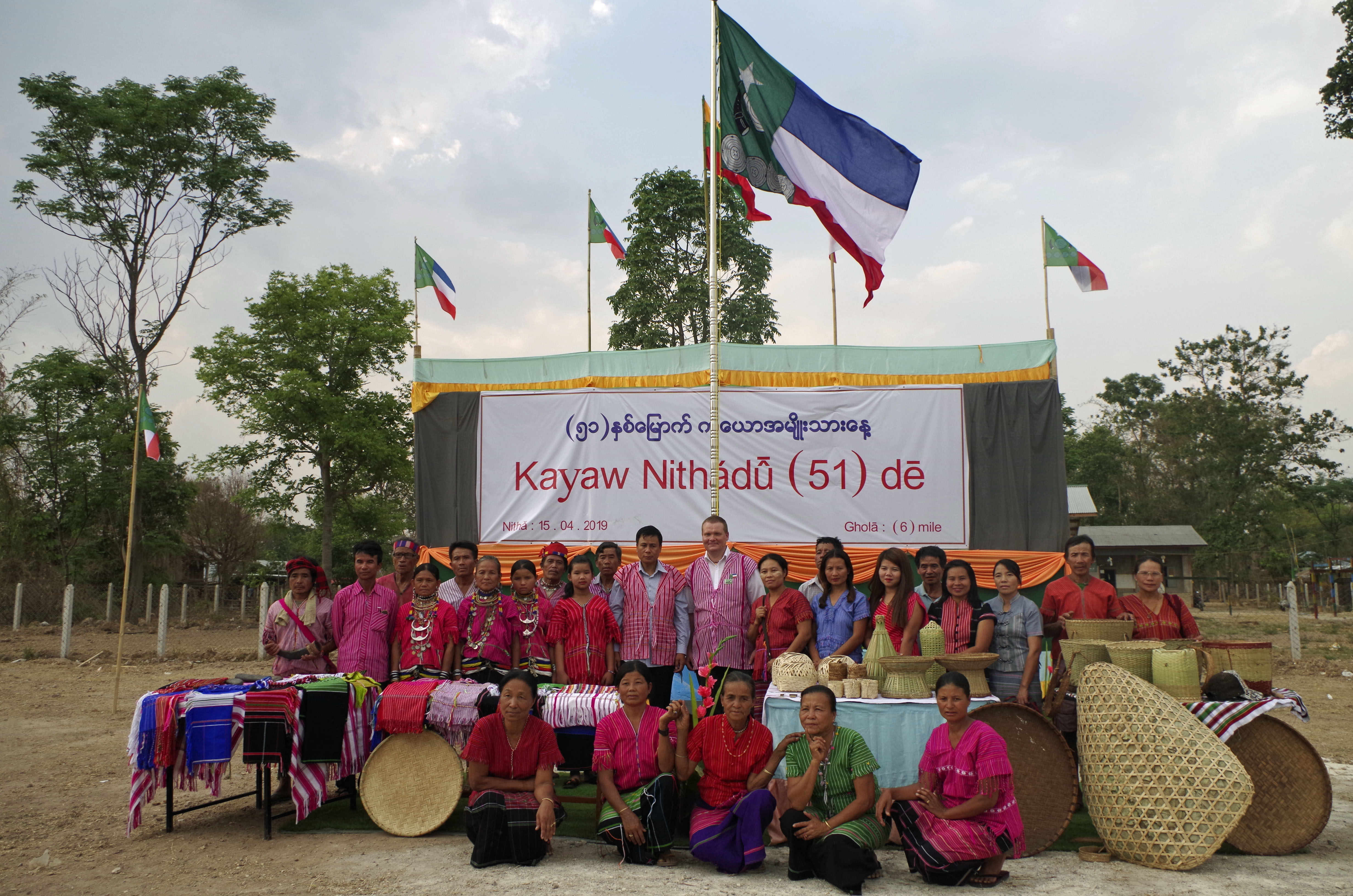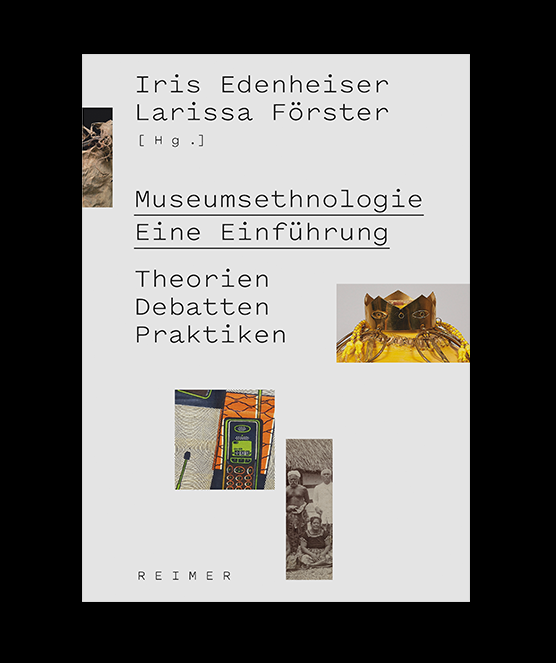On February 28th and 29th 2020, the Linden-Museum hosted the conference “The new Museum. Ideas for the ethnological museum of the future” at the Hospitalhof in Stuttgart. As part of the deliberations for a new building for the Linden-Museum in Stuttgart, an international group of experts presented and discussed forward-looking concepts for work in ethnological museums, outstanding museum architecture and the role of an ethnological museum for the city and its society.
Initiated by the Minister President of Baden-Württemberg, Winfried Kretschmann, the conference was supported by the Ministry of Science, Research and the Arts.

Opening
The conference was opened by Theresia Bauer, Minister of Science, Research and Art of the State of Baden-Württemberg, Marc Gegenfurtner, Director of the Stuttgart Cultural Office, and Prof. Dr. Inés de Castro, Director of the Linden Museum.
Topic 1
Museum Concepts
The first section of the conference was devoted to the conceptual work of (ethnological) museums whose origins are closely linked to European colonialism. To this day, they are still regarded as exhibition sites of the culturally “foreign”, of the “other”. In a society increasingly marked by diversity, this (self-)understanding must be overcome and the social role and relevance of ethnological museums must be renegotiated. The opening discussion between Dr. Friedrich von Bose, prof. Dr. Plankensteiner and Prof. Dr. Inés de Castro explored the challenges facing ethnological museums today.
How can historical collections be used to explain current contexts? How can ethnological museums contribute to decolonization and give space to the many-voiced discussions and negotiations about (cultural) ownership, participation and visions for an ethical coexistence? The keynote speakers expanded the discussion into other museum sectors that are confronted with similar questions. They reported on their experiences and present possible approaches for discussion.
Topic 2
Museum Architecture
The second section focused on the role of architecture of and for museums. What possibilities does a new building offer for the work of museums? What is its relationship to the city and its inhabitants? Using examples and ideas from various fields of architectural practice, the contributors will open up perspectives on these issues.
Complemented by perspectives from Stuttgart, the subsequent panel discussed how the interplay between the tasks and spatial requirements of a museum and its social role in the city can be implemented in an attractive architectural design.
Topic 3
Museum and City/Society
The third section of the conference approached the challenges associated with a new building for the Linden-Museum from an (urban) social perspective. Not only as an architectural landmark, but also as a (semi-)public place, it will be of importance to the Stuttgart population. How does a museum become a participatory space offering opportunities for Stuttgart’s residents and visitors? What does this mean for the concept and design?
The keynote speakers reported on their practical and theoretical work and outlined the pitfalls and challenges of participatory work processes.
Closing
At the end of the conference, State Secretary Petra Olschowski, the Head of the Cultural Office of Stuttgart, Marc Gegenfurtner, and the Linden-Museum’s Director Prof. Dr. Inés de Castro reflected on the questions and ideas raised during the previous two days. They discussed how a new building for the Linden-Museum could be developed and what an ethnological museum means for Stuttgart today and in the future.
